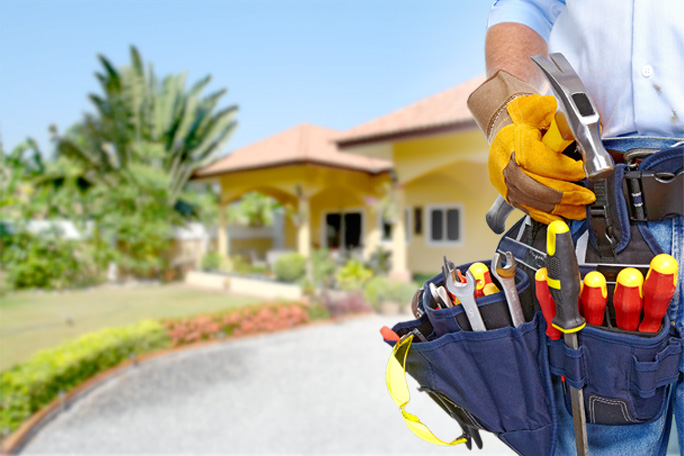
Maintaining a tidy and clean yard on your rental property is important. Overgrown lawns can be a problem for potential tenants and visitors. In addition, it can attract dangerous animals. Not taking care of your yard can lead to expensive repairs and fines from your local municipal government.
It pays to maintain the property's front and back gardens. Many renters will pay higher for houses with a well-kept garden. The lawn will bring additional value to the house for the landlord.
Other than watering the lawn and mowing it, your tenant might have to fertilize, weed and mulch it. You might even be asked for help installing a sprinkler or automatic timer.

Although landlords and tenants might not agree about all details, it's worth making an effort to reach an agreement. Although professional landscaping can be expensive, landlords have the option of hiring a professional to maintain their properties. It is also a good idea for you to talk with your local property management company about the matter. This way, you can find out about the latest techniques and best practices for the job.
Your landlord or property manager will be able to help you make this decision, as they have the information and experience necessary to do so. But, it is essential that you fully understand all aspects of the lease. This matter is also covered by the laws and ordinances within your state.
Native plants are the best option for lawn care. Native plants are more tolerant to the local climate, and therefore require less fertilizer. You can enhance the look of your yard by adding a fence.
A lawn that is free of any debris and clean will help keep the critters away. The grass will stay greener if it is well-watered. You can reduce the chance of disease by keeping the area clear and free from weeds.

It might be a good idea to hire a professional to manage your rental properties if you have many tenants or multiple units. Professional companies will also have the equipment, tools and expertise to ensure a high-quality job. These companies may also offer lower rents to make up for the services they provide.
It is worthwhile to understand what the average tenant needs from their rental home. This will help you keep your yard looking great and save you money.
It will not only increase your home's value, but also increase your chances to find the right tenants. Landlords are often looking for tenants who are willing to perform tasks beyond the regular chores. This can be achieved by taking a few moments to discuss your expectations and needs with a respected rental agency. The curb appeal of your home can be enhanced by adding new plants or accessories to your yard.
FAQ
Can a handyman fix my leaking faucets
Although a handyman may be able to handle minor repairs, he will not have the necessary training to tackle major projects such as wiring a house or installing custom cabinets. There are many things a handyman could do for minor home improvements.
How many hours does it normally take to complete a typical DIY project?
An average DIY project takes between two and four hours. The difficulty and complexity of the project will affect how long it takes.
How often should I use a handyman for my job?
It all depends on what your project is. You might only need one handyman per work week if your job is a simple fix-it, such as changing a light bulb. However, if there is a lot of remodeling involved, you could probably use several handymen over the course of the project.
Statistics
- Our handyman services for seniors are provided by professional senior helpers who have been serving the community for over 20 years with 98% customer satisfaction. (cantatahomeservices.org)
- A franchise was approximately $110,000 with a franchise fee of $14,900, according to a spokesperson for a national handyman franchise. (en.wikipedia.org)
- With a strong housing market, the handyman and general maintenance worker industry are expected to grow by nearly 10% in the next decade. (housecallpro.com)
- More than 20% of homes in America have outdoor living spaces, including decks and patios. (mrhandyman.com)
- Another estimate was that the market in the United States was $126 billion and was increasing by about 4% annually. (en.wikipedia.org)
External Links
How To
How to Replacing a Broken Tile
Step 1 – Remove the tiles.
You can remove the old tiles from your floor and save them. These tiles should be kept intact in case you need them again. Note which pieces are missing or damaged to avoid having to search for replacements.
Step 2 - Select New Tiles
You can take a look at the different options for tile replacement.
-
Locate a replacement tile that is the same as the one you just removed.
-
To find the right piece, take the measurements you took as you were removing the tiles. This makes it easier to get the right size without having to measure again.
-
Look for various colors, patterns, textures, sizes, shapes, etc.
-
If you have a preference for grout, consider what it would be best to use. Some people prefer a certain color, others like to mix it up.
-
It is important to ensure that the tile you choose resists moisture.
-
Consider the location of your tile. You can save both time and money by making sure that there is enough room for proper installation.
-
After you've selected your tile, place your order online or at your local Lowe's shop.
Step 3 Install the new tiles.
To install your tiles, follow the same procedure as before. Be careful to align them properly so they fit together perfectly.
Step 4 - Clean up
Before putting down the final layer of protective material, clean up all the debris from the floor.
This will prevent dirt or dust from collecting between the tiles and causing mold.
Step 5 - Sand the Floor
After everything has been cleaned, sand it down to remove any remaining particles from the previous steps.
Step 6: Finish off
Once the floor has been completely smoothed, apply the protective coatings on the tiles. It's important to wait until this point because wet paint can stain the surface of the new tiles.
To help prevent stains, you could always use a product called 'damp-anddry' on your floors.
However, it will not cover all possible problems that may arise after you have installed your tiles. Consider adding an anti slip coating to your protective layer if you have kids.
Finally, don't forget to keep your protective sealer in place for several weeks before moving into your new home.